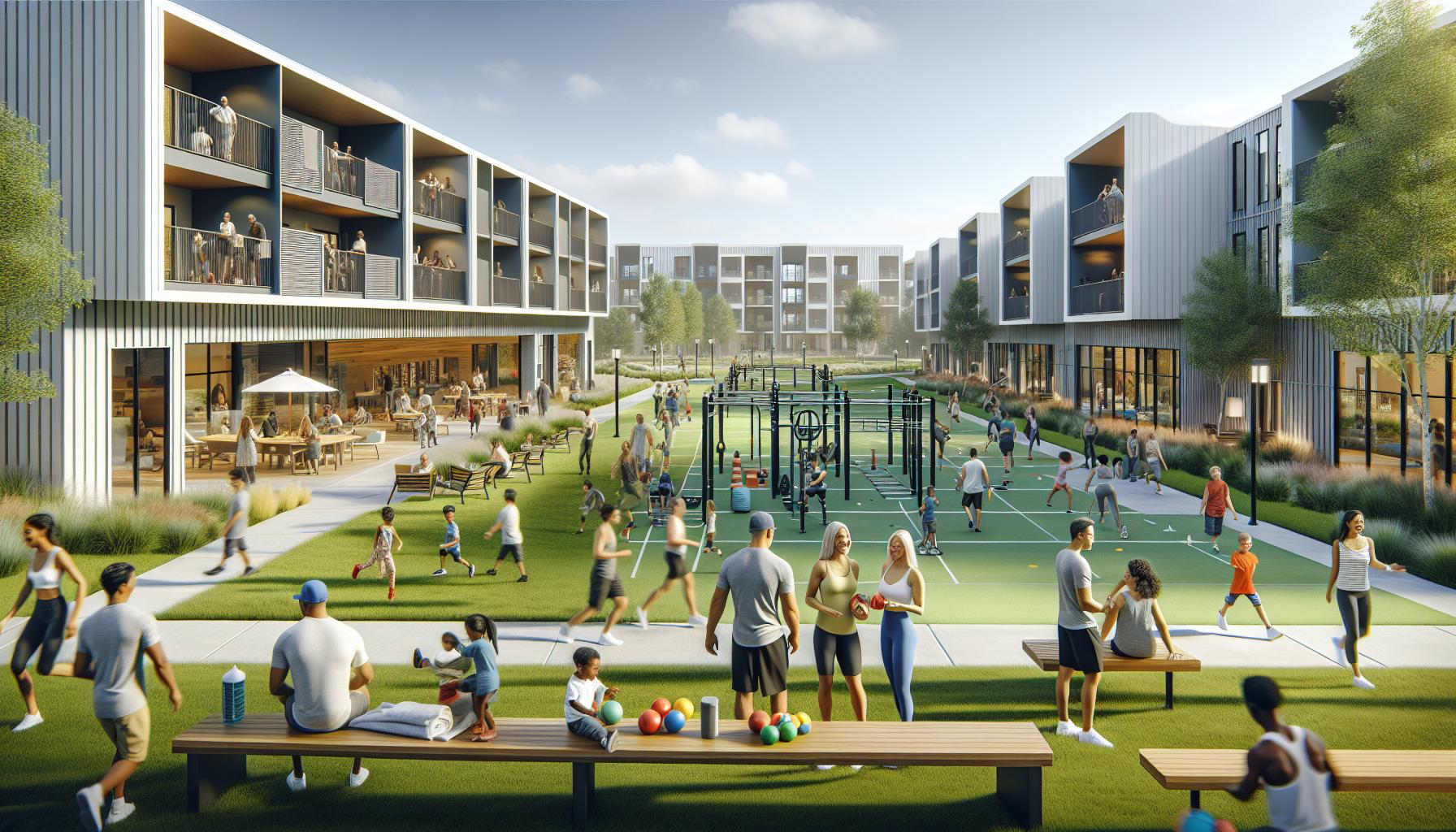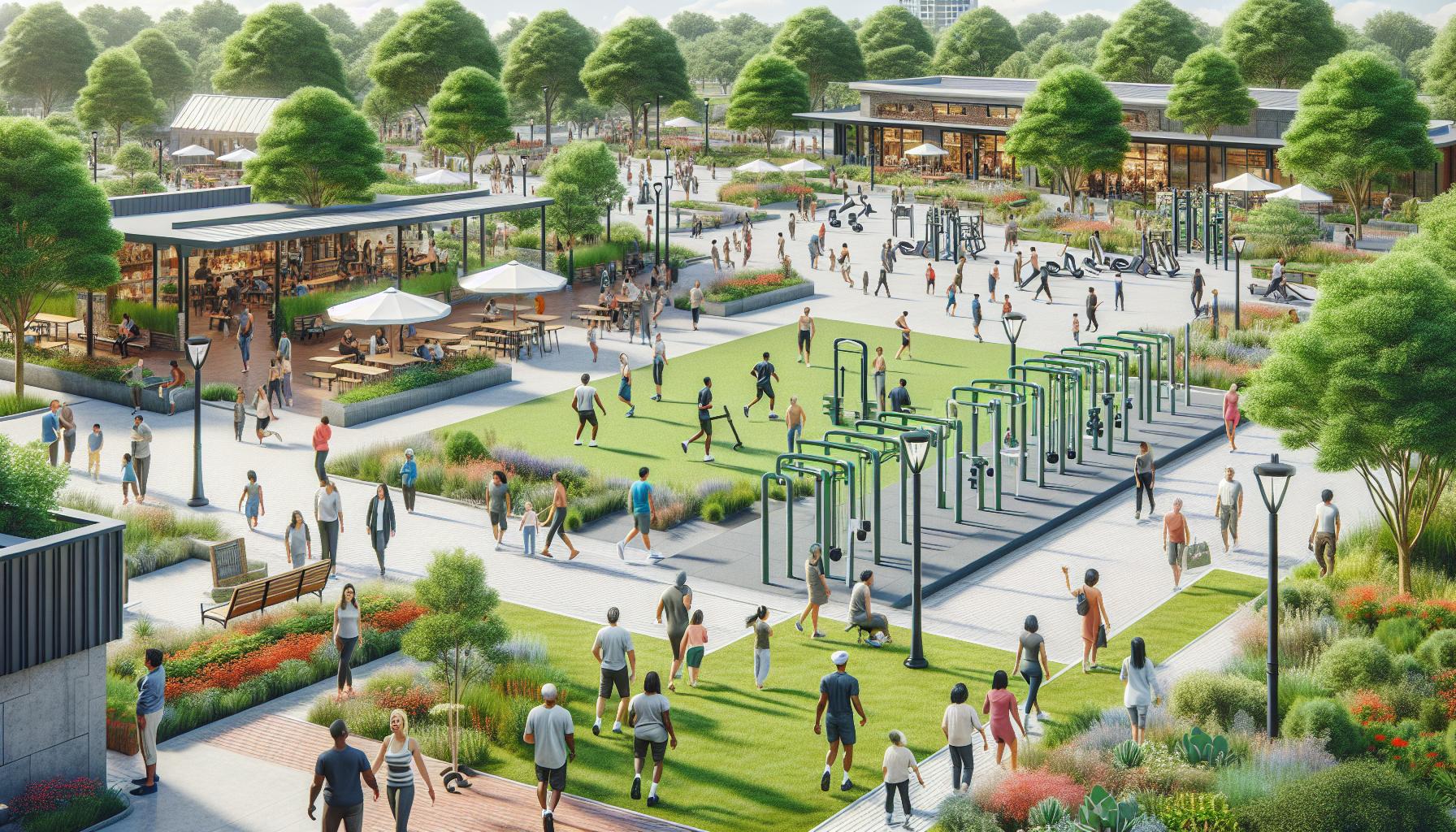In today’s fast-paced world, the concept of home has evolved beyond mere shelter. It’s become a reflection of our lifestyles, aspirations, and personal values. That’s where lifestyle realty comes into play, offering properties that align with the way we live, work, and play. I’ve seen how this trend resonates with buyers who seek more than just a house; they want a community that enhances their everyday experiences.
Lifestyle realty isn’t just about the physical space; it’s about creating an environment that fosters connection, wellness, and fulfillment. Whether you’re drawn to vibrant urban settings, serene suburban neighborhoods, or picturesque rural escapes, understanding the nuances of lifestyle realty can transform your home-buying journey. Join me as I explore the exciting world of lifestyle realty and uncover what makes it a game-changer in today’s real estate market.
Key Takeaways
- Evolving Concept of Home: Lifestyle realty prioritizes properties that reflect individual lifestyles and values, transforming traditional home-buying approaches.
- Community-Centric Developments: This realty trend emphasizes communal spaces and shared amenities, fostering connections and enhancing overall quality of life for residents.
- Diverse Property Types: Lifestyle realty includes unique options like condominiums, townhouses, co-housing communities, and eco-friendly homes, catering to various personal preferences.
- Sustainable and Tech-Integrated Living: The integration of sustainable practices and advanced technologies enhances living experiences and meets modern expectations for comfort and environmental responsibility.
- Investment Potential: Properties in lifestyle-oriented communities tend to appreciate faster, making them attractive investment opportunities for buyers concerned with long-term value.
- Market Challenges: The lifestyle realty market faces competition and economic fluctuations, necessitating strategic decision-making for buyers and investors.
Overview of Lifestyle Realty
Lifestyle realty represents a shift in how I approach property buying and selling. It prioritizes locations and environments that resonate with specific lifestyles, rather than merely offering physical structures. This concept attracts buyers who desire a holistic living experience and seek communities that align with their personal values and aspirations.
Key characteristics of lifestyle realty include:
- Community-Centric Developments: Properties emphasize communal spaces, fostering connections among residents.
- Wellness Amenities: Features like gyms, parks, and wellness centers promote health and well-being.
- Accessibility to Local Attractions: Locations near shops, restaurants, and cultural venues enhance daily life.
- Sustainable Living Options: Many properties incorporate eco-friendly designs and features, appealing to environmentally-conscious buyers.
Lifestyle realty also encourages a unique sense of place. Buyers become part of an ecosystem that reflects their preferences. The focus is not solely on the property but encompasses the broader lifestyle that comes with it. This approach fundamentally alters the real estate landscape by aligning properties with the rhythms of modern life.
Key Features of Lifestyle Realty

Lifestyle realty offers distinct features that resonate with modern buyers. The focus lies on properties that elevate the living experience and integrate seamlessly into the surrounding environment.
Unique Property Types
Unique property types characterize lifestyle realty, catering to diverse preferences. Options include:
- Condominiums: High-rise units with shared amenities that foster community interaction.
- Townhouses: Multi-level homes encouraging neighborhood connections while offering private space.
- Co-housing Communities: Intentionally designed spaces promoting shared facilities and collaboration among residents.
- Eco-friendly Homes: Properties built with sustainable materials, appealing to environmentally-conscious individuals.
These property types emphasize lifestyle needs, encouraging buyers to choose homes that reflect their values and preferences.
Community Amenities
Community amenities serve as highlights in lifestyle realty, enhancing day-to-day living. Available amenities often include:
- Fitness Centers: On-site facilities promoting health and wellness through regular exercise.
- Swimming Pools: Relaxation and recreation spaces fostering community gatherings.
- Parks and Green Spaces: Natural areas supporting outdoor activities and providing places for social interaction.
- Event Spaces: Multipurpose venues for hosting gatherings, workshops, and celebrations, enriching community engagement.
These amenities create a vibrant environment, allowing residents to connect, unwind, and thrive within their communities.
Benefits of Choosing Lifestyle Realty

Choosing lifestyle realty significantly enhances living experiences, aligning home choices with personal aspirations. This option provides various benefits that cater specifically to modern demands.
Enhanced Quality of Life
Enhanced quality of life stems from community-centric developments. Properties promote interactions, creating lasting relationships among residents. Access to wellness amenities, like fitness centers and parks, supports an active lifestyle. Local attractions, such as cafes and shops, reduce travel time, allowing for more leisure activities. Sustainable options also improve living conditions, fostering environmental responsibility and contributing to overall well-being.
Investment Opportunities
Strong investment opportunities characterize lifestyle realty. Properties in desirable community settings often appreciate faster than traditional homes. Demand for unique living spaces continues rising, attracting diverse buyers. By choosing lifestyle realty, I can tap into markets that emphasize experience and quality, yielding potential long-term returns. The focus on sustainable living also appeals to eco-conscious investors, ensuring relevance as trends evolve.
Trends in Lifestyle Realty

Current trends in lifestyle realty reflect a shift towards sustainability and technological integration, enhancing the overall residential experience.
Sustainable Living
Sustainable living remains a key trend in lifestyle realty. Eco-friendly homes incorporate energy-efficient systems, such as solar panels and smart thermostats, which reduce utility costs and environmental impact. Sustainable developments prioritize green spaces, promoting biodiversity and outdoor activities. Properties with sustainable features often include materials sourced locally, reducing transportation emissions. Buyers increasingly seek homes with sustainable certifications, such as LEED or ENERGY STAR, emphasizing their commitment to the environment. This trend not only attracts eco-conscious buyers but also supports long-term cost savings.
Technological Integration
Technological integration transforms how residents interact with their homes and communities. Smart home technologies, like advanced security systems and integrated home automation, offer convenience and enhanced safety. Lifestyle realty developments frequently incorporate high-speed internet access, catering to the growing demand for remote work and digital connectivity. Community apps facilitate communication among residents, promoting social interaction and event participation. Data-driven designs enhance energy efficiency and comfort, optimizing living environments. This integration enhances lifestyle personalization while fostering a sense of community, aligning with modern living needs.
Challenges in the Lifestyle Realty Market
The lifestyle realty market faces several significant challenges that can impact stakeholders, buyers, and investors alike.
Market Competition
Market competition remains fierce in lifestyle realty. Numerous developers create community-focused properties, leading to an oversaturated landscape. Buyers find it challenging to differentiate between offerings, impacting decision-making. Established neighborhoods attract attention, creating competition within areas with similar amenities and features. A distinct market position is critical for developers to capture buyer interest and foster brand loyalty.
Economic Factors
Economic factors significantly influence the lifestyle realty market. Fluctuations in interest rates affect borrowing costs, impacting home purchasing power. Economic downturns often lead to reduced customer confidence, which can limit sales in lifestyle developments. Additionally, market demand relies on disposable income levels; higher income discrepancies can lead to a narrower target demographic. Investors in lifestyle properties must stay informed on economic indicators to make strategic decisions.
Technology Integration
Lifestyle realty is more than just a trend; it’s a reflection of how we want to live today. I’ve seen firsthand how these properties create vibrant communities that resonate with our values and aspirations.
Choosing a home that aligns with my lifestyle leads to a more fulfilling life. The focus on wellness sustainability and technology integration makes these communities not just places to live but environments that enhance our overall well-being.
As I navigate the evolving real estate landscape I’m excited to see how lifestyle realty continues to shape our experiences and foster connections among residents. It’s a journey worth exploring for anyone looking to invest in a home that truly reflects who they are.
